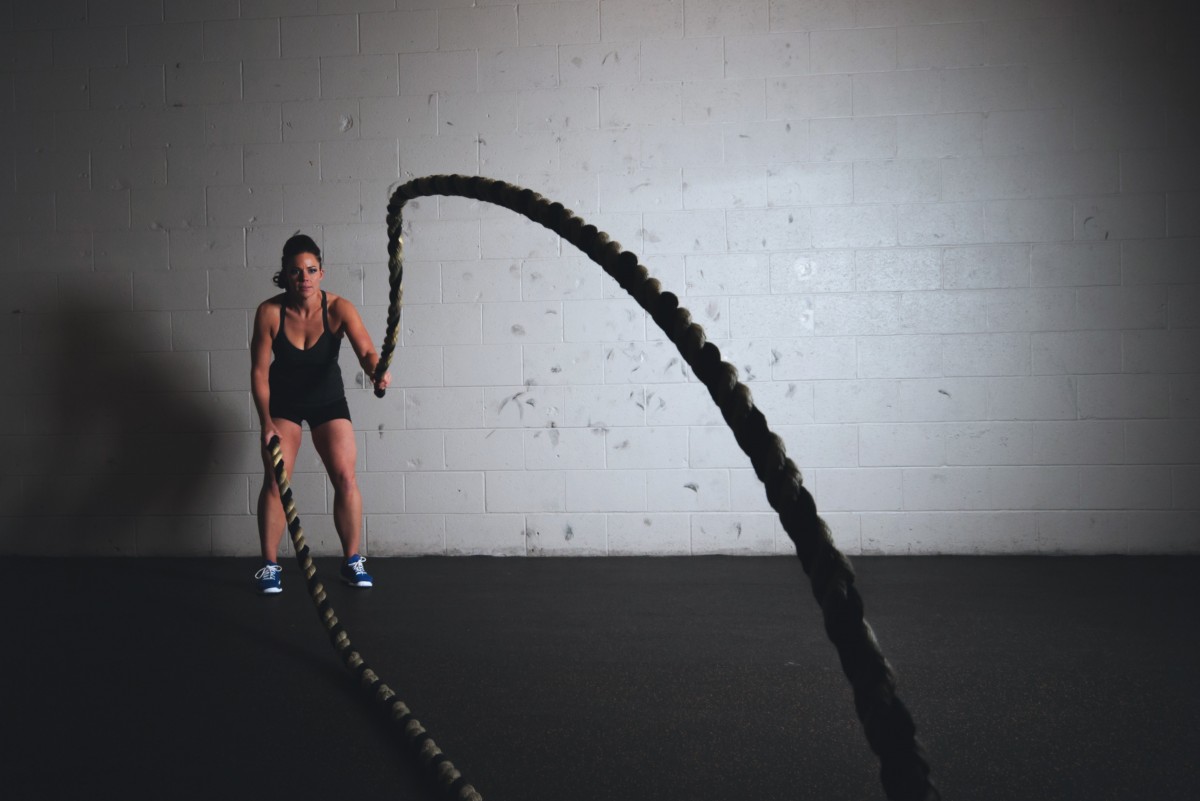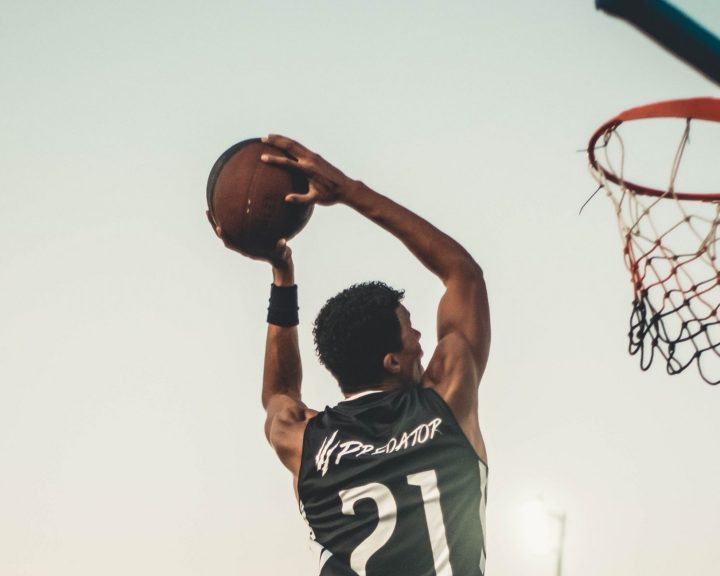Training has to become more difficult over time. When working with athletes, however this takes on an added degree of complexity because an athlete may be training for years. In the previous post (see http://wp.me/p1XfMm-9a), the need to adjust the load was addressed. For the most part, that post dealt with the volume of training, or the amount of work done with only a small part being devoted to intensity. Intensity refers to the difficulty of the work that is being done.
On the surface, addressing training intensity over time seems like a simple issue – just make training more intense as the athlete progresses. Unfortunately, it’s not that simple. First, high training intensities aren’t appropriate for all athletes, all ages, all levels of development, and all positions. Second, intense training has consequences. Third, athletes need to be able to recover from both training and from the sport’s practices/competitions – and this is something that must be factored in. As with the last post, this post will examine the concept of intensity by level of development; high school, collegiate, and elite/pro.
High School:
It is very possible that high school athletes are not training year-round, a coach may literally only have 12-16 weeks to work with them. This, combined with their inexperience presents some challenges for the strength and conditioning coach.
Due to their inexperience and lack of fitness, strength is going to rise quickly with high school athletes. Some of this is due to improved muscle mass, some of this is due to simply learning the exercises. This suggests that a complicated periodization scheme based upon training at a percentage of 1-RM is not going to be useful because their 1-RM may fluctuate wildly during a season.
In the previous article, we suggested breaking exercises into different classes with goal sets/reps/resistances for each type of exercise:
- Olympic lifts: 3-6 reps/set, 60-80% of 1-RM. Focus is on technique, not on moving as much weight as possible.
- Lower/upper body, multi-joint: 4-12 reps/set, 70-90% of 1-RM. Focus is on technique, develop strength, and increasing muscle mass.
- Assistance exercises: 8-15 reps/set. These are supplemental exercise used to develop specific joints and/or muscles.
A four-week approach to training was recommended for this age group. During that time, the resistance increases each week for the first three weeks while the amount of work done decreases. The last week represents a back-off week with some testing of core exercises and reduced intensity and volume for everything else. For example:
| Week One | Week Two | Week Three | Week Four | |
| Olympic lifts | 3x6x60% | 3x6x65% | 3x6x70% | 3x6x60% |
| Multi-joint lifts | 3x12x70% | 3x12x75% | 3x10x80% | 1-RM on 1 or 2 exercises, 3x12x60% on everything else |
| Assistance exercises | 3×15 | 3×12 | 3×10 | 3×15 |
The percentage of 1-RM is useful in that it gives us something to use to determine how much weight the athlete should lift. This simplicity is important when working with a large number of athletes. But, at this level it’s not necessary an accurate representation of what the athlete can actually do due to the speed with which gains are happening as a result of increased fitness levels and learning. With that in mind, keep the following recommendations in mind:
- The percent of 1-RM prescription is providing the coach with an idea of how difficult the exercise should be. In other words, a power clean at 60-80% of 1-RM should allow for 3-6 fast, explosive, technically correct repetitions. If the prescription were 90-100% of 1-RM, the lifts would be a little more sloppy, slower, with some cheating and a great deal of mental/physical fatigue.
- When a repetition range is recommended, the athlete should have a few reps left in the tank. In other words, these are not meant to be performed to failure.
Collegiate:
Collegiate athletes are still making tremendous gains from their training. Among other things they are often on a systematic, planned, twelve-month training process. For many of these athletes, this may be the first time in their lives that this is the case. In the previous post, it was suggested that while classic periodization works for this level, collegiate athletes need to focus on developing strength and power year-round. As a result, the following general suggestions were put forth:
| Off-Season | Pre-Season | In-Season | |
| Power exercises | L / M | L / M | L / M to H |
| Maximal strength exercises | L / M | L / H | M / H |
| Assistance exercises | M to H / M | L / M | L / L |
In practical terms, the table above recognizes that training should flow as the year progresses. In other words, it begins by developing the athlete’s physical foundation (getting them in shape), peaking them, then maintaining that peak. During the in-season (i.e. when the peak is being maintained), training sessions and volume are cut back so the athlete’s training time must be maximized. Volume and intensity recommendations can be thought of as follows:
| Off-Season | Pre-Season | In-Season | |
| Power exercises | 3×3-6×60-80% | 3×3-6×60-80% | 3-5×1-3×80-90% |
| Maximal strength exercises | 3×8-12×70-80% | 3×4-10×75-85% | 3×1-6×80-100% |
| Assistance exercises | 3×12-15 | 3×8-12 | 3×4-8 |
The intensity on the power exercises is never as high as on maximal strength exercises. This is because as an athlete gets near their max on these exercises, they tend to slow down and become sloppy with their technique. Maximal attempts on the power clean might be appropriate for an Olympic weightlifter, but for most athletes it is not simply because power output peaks at the 50-90% range on all these exercises – so if we’re using these lifts to enhance sports performance then it’s not necessary to go much heavier than 90%.
Again, the intensity is meant to give an idea of the effort level. An athlete just beginning their program won’t have an accurate 1-RM. In terms of the assistance exercises, the athlete should still have 1-3 reps in the tank at the end of each set.
Elite/Pro:
Elite and pro athletes are going to have individualized, sport-specific training programs. There will be very little “training to train” with them as it is not a productive use of their time. With elite/pro athletes, there is a very big variable to consider before deciding how to approach training intensity. The variable is the athlete’s training history.
For athletes with an extensive training history, say 8-10 years, training intensities are going to be approached differently than those with a less extensive training history. Athletes with the extensive training history are going to be very close to their genetic limitations in terms of strength. This is actually an important thing to consider as it means that a great deal of effort and time will have to be spent to increase their strength by a small amount. This effort and time will also put the athlete at greater risk to injury as a result of this training and it is unclear if the additional strength will result in performance improvements. For this type of athlete, the focus is going to be on maintaining their strength while focusing on learning how to apply it to their event. This is going to translate into a lot of time spent at the 70-90% intensity range along with a great deal of focus on complexes, contrast training, and advanced training tools like chains, bands, and variations of the different lifts. At this level the athlete will have a repetition or two left in the tank during each set. For an athlete without that extensive training history, there is still going to be a need to increase their strength while learning to apply it to their sport. This is going to translate into training intentionally focused on increasing their strength, which will mean some focus on the 80% plus range combined with training for power (60-70% range) and some foundational assistance work.
With elite and professional athletes, two other important considerations need to be kept in mind. First, they tend to be older. This means they are less able to recover from training, so changes in training need to take sports practice and competition into account along with the athlete’s age. Second, these athletes may be in-season for a long time. This means that an “ideal” training program might not be possible and that training will need to be clustered far away from competition in less-than-ideal circumstances.


